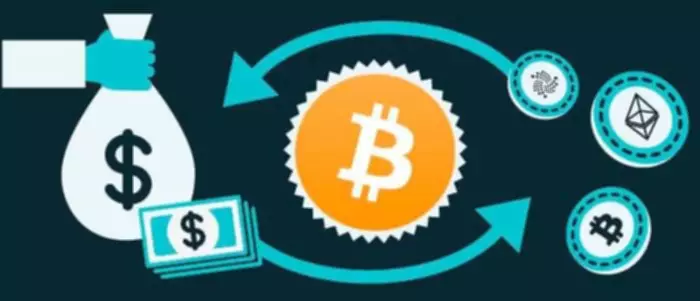What’s An Automated Market Maker Amm?
Future developments may include the enlargement of asset assist, the introduction of progressive features, and elevated integration with different DeFi protocols. These advancements are anticipated to further contribute to the broader decentralization and innovation developments throughout the cryptocurrency ecosystem. The concern of charges and scalability inside AMMs and decentralised exchanges is a function of the wider battle among Smart Contract suitable chains. Ethereum’s imminent merge is being carefully watched given the influence it might have together with the development of Layer 2 rollups which doubtlessly cut back fees to pennies.
Instead, you work together immediately with the sensible contract in a peer-to-contract (P2C) manner. This Article doesn’t offer the acquisition or sale of any monetary devices or associated companies. Joining a liquidity pool is accessible to anyone with a self-custody wallet and compatible tokens.
It has its personal governance token that’s paid to LPs (liquidity providers) in addition to charges from transactions and provides them a say in the way forward for the platform. With a rigid pricing algorithm in place, it’s very difficult to both inflate or deflate the value of an asset in a liquidity pool. This means, AMM platforms all the time preserve an equal measure of liquidity for each respective pool. However, on the finish of the calculation, the primary aim is to find out a steady worth for each asset in that liquidity pool utilizing the sensible contract algorithm. The market maker is commonly tasked with providing liquidity for an asset and securing consistent interest from consumers and sellers for the stated asset.
Liquidity Pool – A Central Factor
The AMM is answerable for matching trades, and as such, when a trader interacts with the DEX sensible contract, they’re altering the out there liquidity that the AMM monitors. These will execute supplied that these mathematical situations are met by both events, as sensible contracts can’t be tampered with. The Constant Sum Market Maker (CSMM) is another type, greatest suited to trades with zero worth impression.
They’re mainly utilized in executing immediate buy and promote orders in a liquidity pool. Smart contracts cannot be interfered with when fulfilling these situations. At the identical time, merchants looking for to make a revenue from arbitrage alternatives will establish dislocations in the price of either asset and search to take advantage of it. The pricing formula will recognize this imbalance and should increase the worth of ETH or scale back the value of DAI in accordance with the extent of imbalance between the pairs. Say I want to play the function of a market maker in a crowded marketplace where people are buying and selling fruit and veggies. Automated Market Makers or AMMs are one of many defining innovations in decentralized finance.
- Chainlink Price Feeds already underpin a lot of the DeFi financial system and play a key function in helping AMMs accurately set asset prices and improve the liquidity out there to traders.
- Many of first-generation AMMs are limited by impermanent loss and low capital efficiency, which impacts each liquidity providers and traders.
- Centralized exchanges (CEX) rely heavily on financial establishments for liquidity.
- Some use a easy formula like Uniswap, whereas Curve, Balancer and others use extra difficult ones.
- Constant sum market makers (CSMMs) are an AMM variant that use the sum of two tokens as the idea, unlike CPMM which makes use of the product.
The aforementioned drawbacks however, automated market makers are already proving to be successful. Uniswap V3, Pancakeswap V2 and others are already generating buying and selling volumes which would possibly be similar to and even larger than some major centralized exchanges. Another issue stemming from the AMM design is the so referred to as impermanent loss, which affects liquidity providers (LPs). Depositing property into a liquidity pool is often incentivized by the prospect of producing passive earnings in the form of a share of the total trading charges accrued by the pool. However, because of the impermanent loss phenomenon, this proposition is usually much less profitable than it seems. An AMM, which stands for automated market maker, is a protocol which uses mathematical equations to automate trades and preserve liquidity within a decentralized trade (DEX).
What Are The Different Sorts Of Amm Models?
To additional perceive how AMMs work, let’s take a glance at the necessary thing components that make up an AMM and the way they operate. Attracting as much liquidity as potential is essential, as a outcome what is an amm of it minimizes the slippage caused by massive orders. An AMM can work in several ways, with completely different equations, and some DEXes employ hybrid models for dealing with token swaps.

If you are concerned about shifting the market and price slippage on a DEX you’ll be able to think about breaking your trades into smaller chunks, ready for the liquidity pools to rebalance. This, nevertheless, needs to be balanced in opposition to paying greater fees for extra transactions. AMMs are non-custodial, as customers are solely liable for the safety of their funds. DEX platforms are normally accessed via crypto wallets, and as soon as the person is done, they will disconnect their pockets. This means, platforms cannot retailer any user’s assets but solely processes their transactions using sensible contracts.
What Are Automated Market Makers (amms)?
Adjusting this formulation allows for the optimization of liquidity pools for numerous functions. Also aiming to increase liquidity on its protocol, DODO is using a mannequin often known as a proactive market maker (PMM) that mimics the human market-making behaviors of a conventional central limit order e-book. The protocol makes use of globally accurate market costs from Chainlink Price Feeds to proactively transfer the worth curve of each asset in response to market adjustments, growing the liquidity near the current market value. Ultimately, this facilitates more efficient buying and selling and reduces the impairment loss for liquidity suppliers.

Automated market makers (AMMs) are a type of decentralized cryptocurrency trading platform that uses sensible contracts to allow token swaps and worth trade. Unlike centralized exchanges, this course of does not rely on order books to determine asset prices. Instead, it makes use of a mathematical formulation to find out costs based mostly on the asset’s provide and demand curve.
They can use data from real-world exterior worth oracles like Chainlink to discover out the present market worth of the belongings concerned. Currently, builders are constructing newer iterations of AMMs to overcome drawbacks like slippage and impermanent loss, as properly as others like safety, sensible contract vulnerability, and low capital effectivity. Now that you perceive how liquidity swimming pools work, let’s perceive the nature of pricing algorithms. Well, slippage refers to a selected impact that intensifies greatly when there are large trades and not enough liquidity to support them. It’s the change in value of an asset brought on by a trade order – if the order is just too giant in comparison with the liquidity pool, that change can be fairly vital.

A public key’s a code of alphanumeric characters that users use to receive cryptocurrency in their wallets. A buying and selling bot is a piece of software designed to automate trade-related tasks in cryptocurrency markets. Automated Market Maker has turn into an important method to commerce in Decentralized Finance (De-Fi) ecosystem.
In traditional finance, a market maker is a person or entity whose function it is to allow consumers and sellers to trade items with one another at the most effective price attainable. Let’s take a look at what AMMs are, and how they permit decentralized exchanges to perform. This makes synthetic belongings safer because the underlying property stay untouched while trading activity continues. They also help in danger administration since adjusting parameters dynamically primarily based on external market conditions might help mitigate the danger of impermanent loss and slippage. AMMs could make use of off-chain sources like price oracles to offer reliable value discovery and capital efficiency.
Constant product market makers (CPMMs) are the first kind of automated market maker (AMM), introduced by Bancor in 2017. A yr later, the launch of Uniswap made the CPMM model much more popular. A liquidity pool refers to a digital pool of crypto funds current within a sensible contract on a blockchain. These swimming pools sometimes have two tokens, but in some instances, they might have multiple token. DEXs rely on a particular kind of system referred to as automated market makers (AMMs) to facilitate commerce in the absence of counterparties or intermediaries.
AMMs have really carved out their niche within the DeFi area due to how easy and easy they are to make use of. Decentralizing market making this way is intrinsic to the vision of crypto. Leased Proof of Stake (LPoS) is a consensus mechanism that allows cryptocurrency holders to lease their coi… Open interest refers to the complete variety of outstanding derivative contracts, specifically futures and opti…

